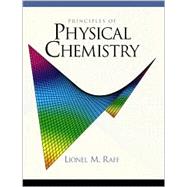
LIONEL M. RAFF is Regents Professor of Chemistry at Oklahoma State University. He did his undergraduate studies at the University of Oklahoma, majoring in chemistry, physics and mathematics, and his graduate studies at the University of Oklahoma and the University of Illinois, Urbana-Champagne, working with Professor Aron Kuppermann on electron impact spectroscopy. Professor Raff completed postdoctoral studies at the University of Illinois and at Columbia University as an NSF Postdoctoral Fellow with Professor Martin Karplus studying theoretical methods for the investigation of reaction dynamics. He then joined the chemistry faculty at Oklahoma State University.
Professor Raff is the author of 165 scientific papers and three book chapters primarily in the area of theoretical studies of reaction dynamics in addition to the text and Instructor's Guide for Principles of Physical Chemistry. Dr. Raff was elected to Outstanding Educators in America in 1975. In addition to four teaching awards from Oklahoma State University, he received the Oklahoma Medal for Excellence in College/University teaching from the Oklahoma Foundation for Excellence in 1993.
Professor Raff and his wife Murna have two children, Debra and Aaron.
I. CLASSICAL THERMODYNAMICS.
II. QUANTUM MECHANICS AND BONDING.
III. SPECTROSCOPY.
IV. STATISTICAL MECHANICS.
V. KINETICS AND DYNAMICS.
The New copy of this book will include any supplemental materials advertised. Please check the title of the book to determine if it should include any access cards, study guides, lab manuals, CDs, etc.
The Used, Rental and eBook copies of this book are not guaranteed to include any supplemental materials. Typically, only the book itself is included. This is true even if the title states it includes any access cards, study guides, lab manuals, CDs, etc.